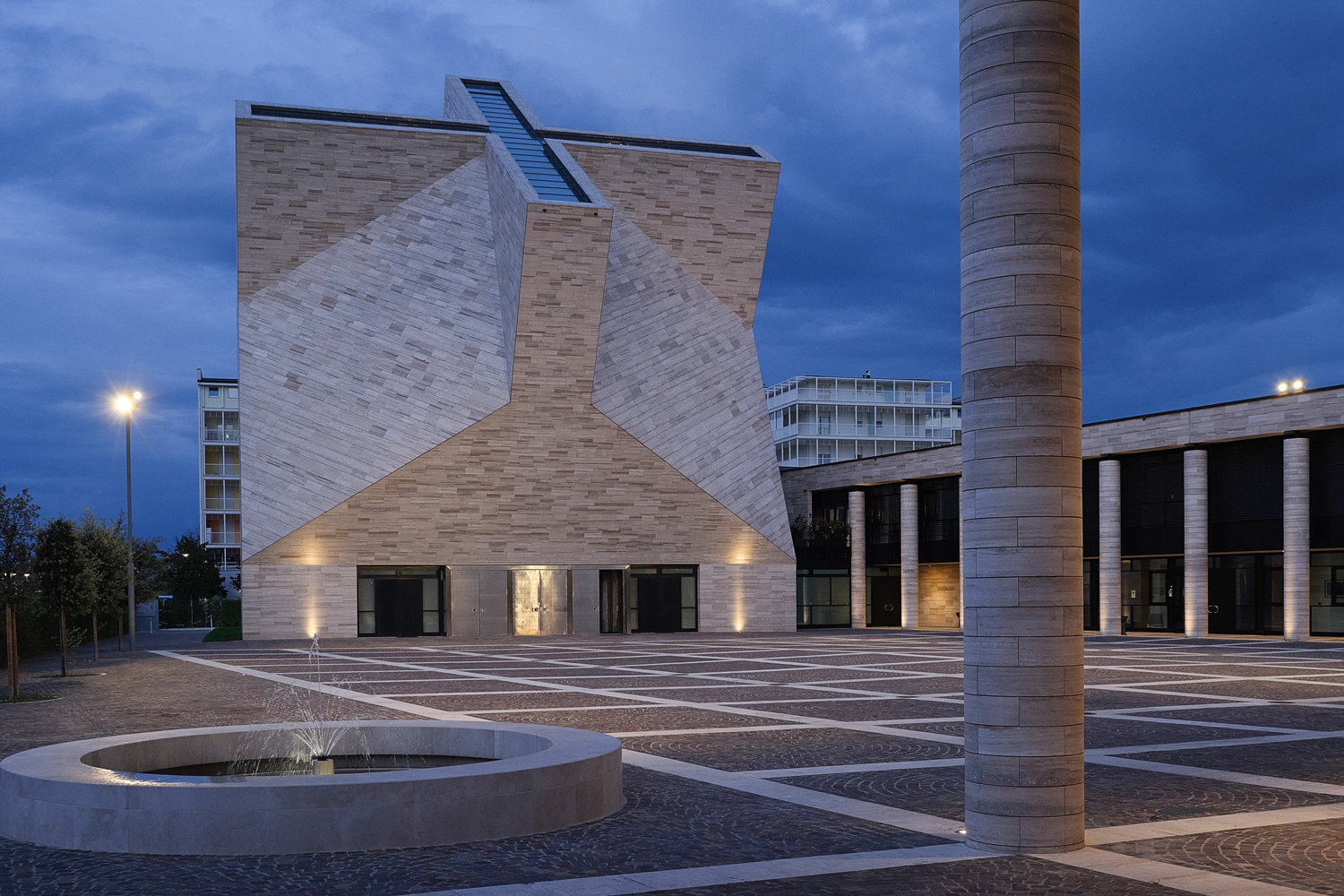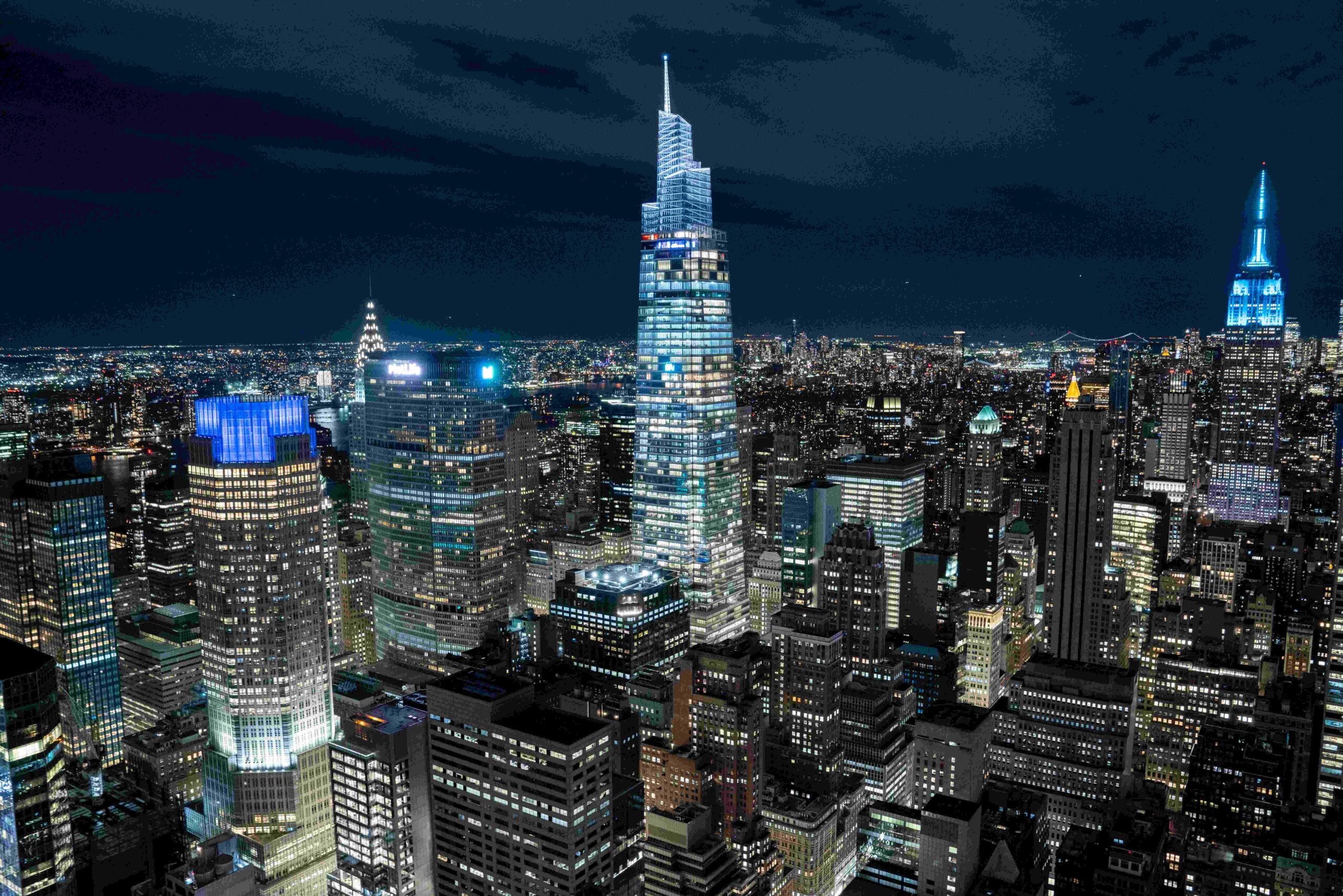Cover photo: The Lighthouse (2019) Robert Pattinson, Willem Dafoe – Ph. Courtesy of A24
February 2025. Across cinemas worldwide, Robert Eggers’s Nosferatu captivates and terrifies millions, bringing audiences back to a story nearly as old as cinema—the tale of Count Orlok, the cinematic alias of Bram Stoker’s Dracula. The character first appeared on the big screen in 1922 in Nosferatu, a defining early cinema film directed by Friedrich Wilhelm Murnau.
This year, Eggers’ notoriety has arguably reached its peak with Nosferatu. However, earlier works, including The Witch (2015) and The Lighthouse (2019), had already propelled his career. The latter is particularly intriguing in this context, as it shares a recurring theme with Nosferatu: the pivotal role of light within the narrative.
While in Nosferatu, light is significant as a natural force opposing darkness and evil, in The Lighthouse, it takes an even more central role—it is embedded in the very title, referring to the beacon where the film’s eerie horror unfolds.
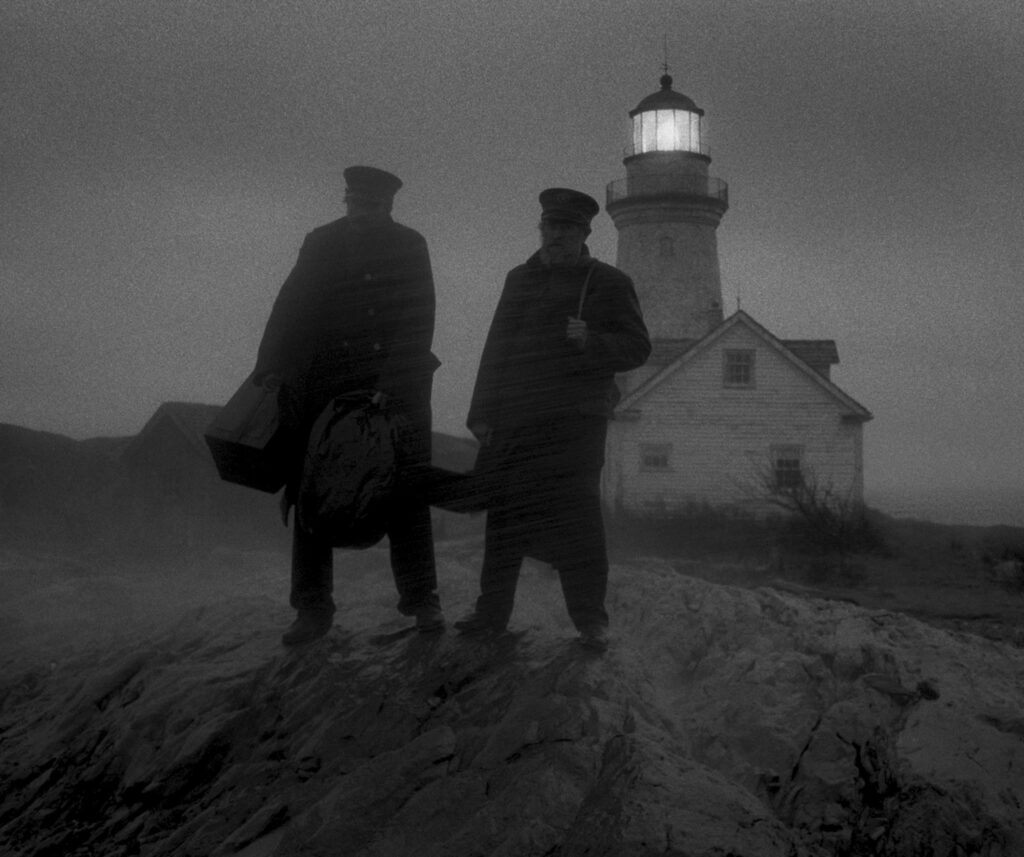
The Lighthouse: production and plot
Robert Eggers first considered The Lighthouse during the pre-production of The Witch, when his brother, Max Eggers, proposed adapting Edgar Allan Poe’s unfinished short story The Lighthouse. Eventually, Robert completely rewrites the screenplay with his brother, creating a standalone story that takes only loose inspiration from Poe’s work.
Set in the late 19th century on the remote coasts of New England, The Lighthouse follows young Ephraim Winslow (played by Robert Pattinson), who takes on a one-month job as a lighthouse keeper on an isolated island. His work is supervised by the older, domineering Thomas Wake (Willem Dafoe), an irritable and demanding companion who assigns him increasingly grueling tasks—such as emptying chamber pots and hauling kerosene containers up the lighthouse tower.
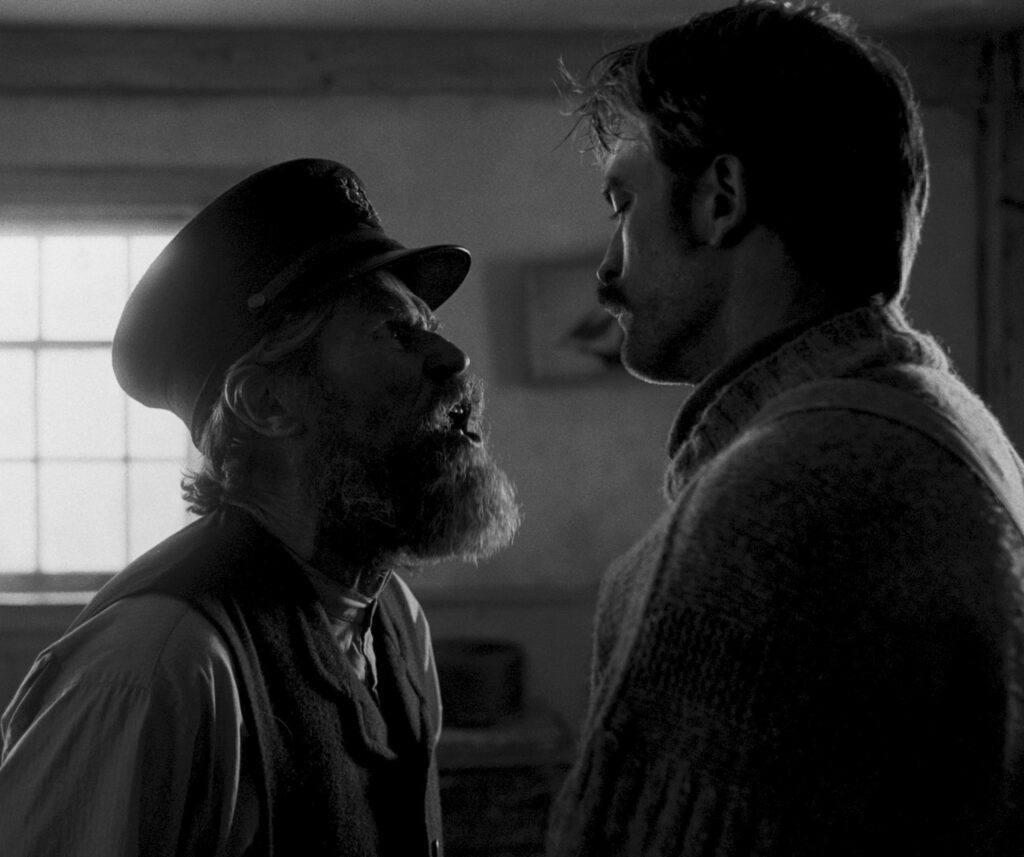
From the start, an unsettling atmosphere looms. Wake forbids Winslow from accessing the top of the lighthouse where the light source is. This light seems to hold an almost erotic fascination for Wake as Winslow observes him ascending the tower each night, undressing completely to bask in its glow. Meanwhile, Winslow begins to suffer hallucinations of sea monsters while a one-eyed seagull relentlessly torments him.
The tension escalates rapidly. Despite Wake’s warnings that killing a seagull brings bad luck—as the birds are said to embody the spirits of dead sailors—Winslow brutally kills the one-eyed gull with a hammer. As soon as the bird dies, the wind shifts, ushering in a violent storm that cuts off any chance of resupply by boat. With their food stores ruined, the two men spiral into self-destruction, consuming all available alcohol and resorting to drinking whatever remains.
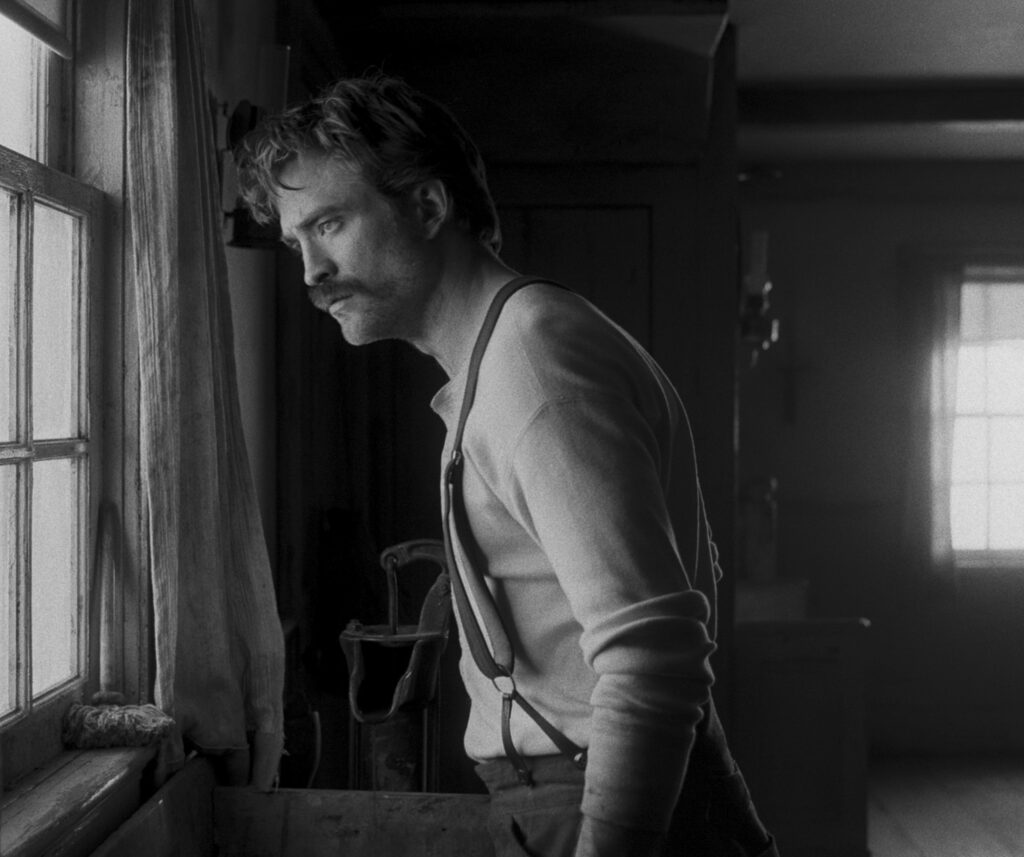
The Lighthouse: the ending
The narrative becomes increasingly sinister as it hurtles toward its grim climax. The men oscillate between drunken camaraderie and escalating violence, their interactions fueled by alcohol and paranoia. Ultimately, Winslow overpowers Wake and seizes the lighthouse keys, desperate to uncover the light’s secret—though the film never explicitly reveals what it holds.
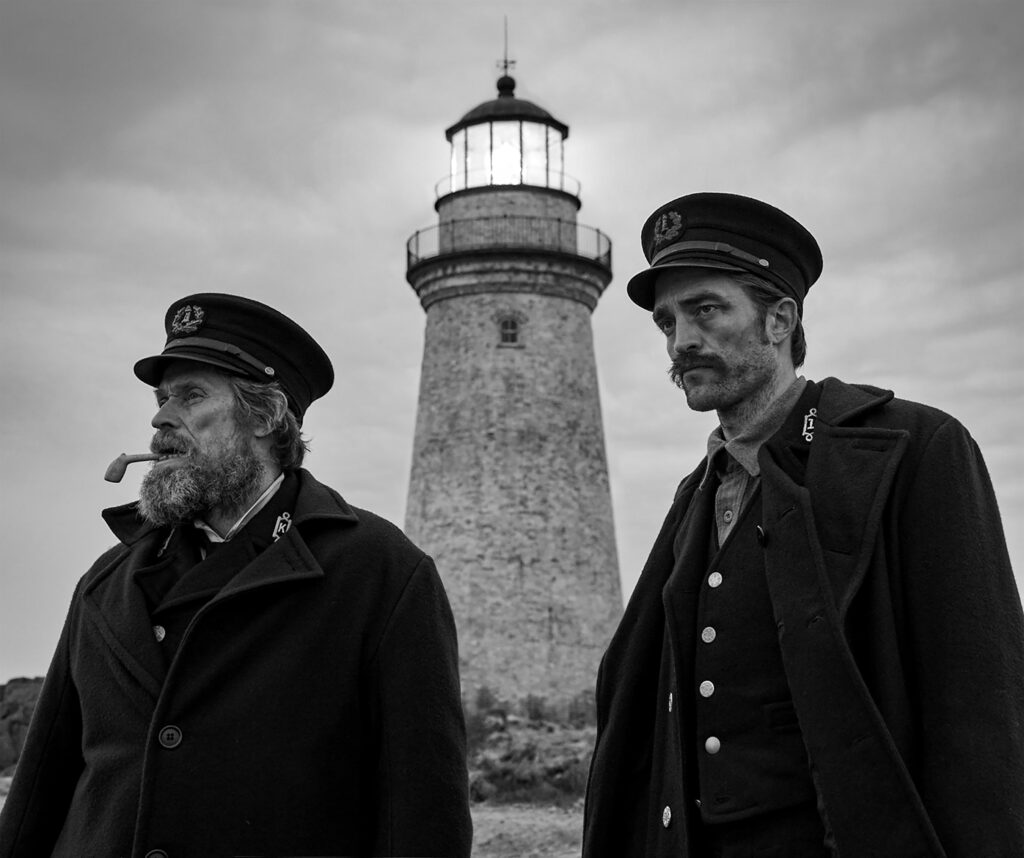
Light and Symbolism in The Lighthouse
The Lighthouse is steeped in symbolism, reinforcing the central role of light within the film. Winslow’s character evokes figures from Greek mythology, blending elements of Prometheus and Icarus—he longs for the light above all else and suffers a tragic fate as a result. Wake jealously guards the light, repeatedly asserting that it belongs to him alone. The climactic struggle between the two men visually references Sascha Schneider’s 1904 Symbolist painting Hypnosis, in which a dominant figure uses light to blind and overpower his adversary.
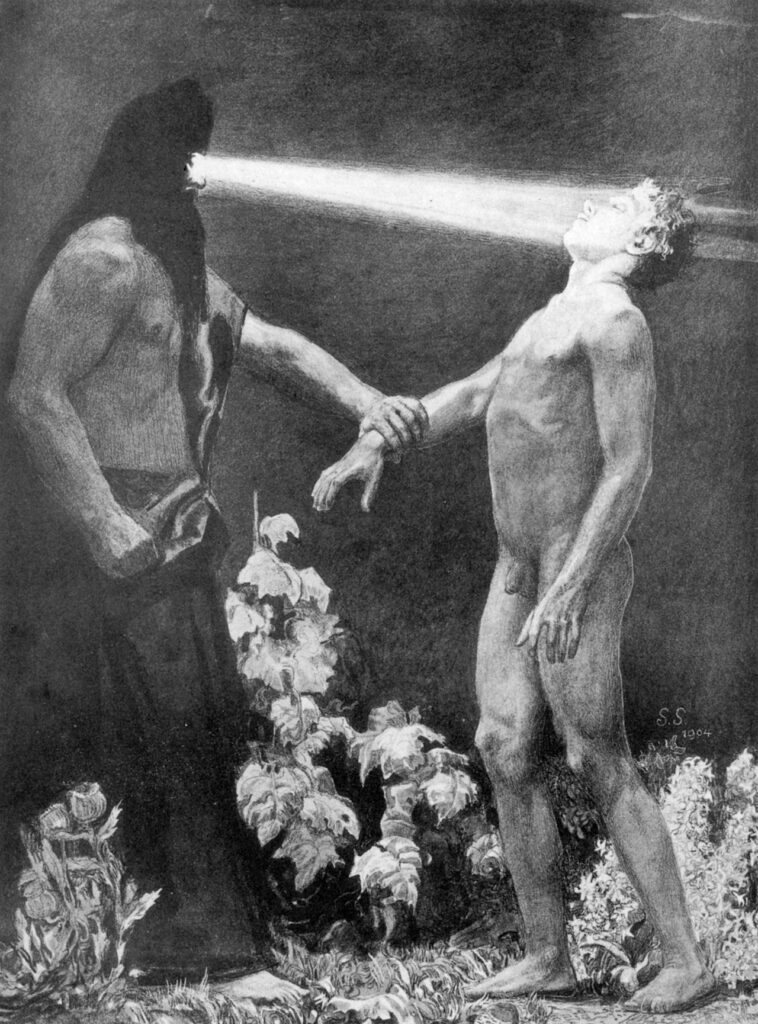
On a technical level, the film’s stark black-and-white cinematography is worth noting. Eggers never considered shooting in color, stating, “I imagined a world that was crusty, dusty, moldy, and rusty—in black and white.” In line with this vision, the film was shot on 35mm black-and-white film, emphasizing the stark contrast between light (white) and darkness (black).
In The Lighthouse, light carries an open-ended semiotic value. It functions first as a technical element, then as a narrative device, and ultimately as a symbolic force, manifesting in the film’s layered mythological and artistic references.

